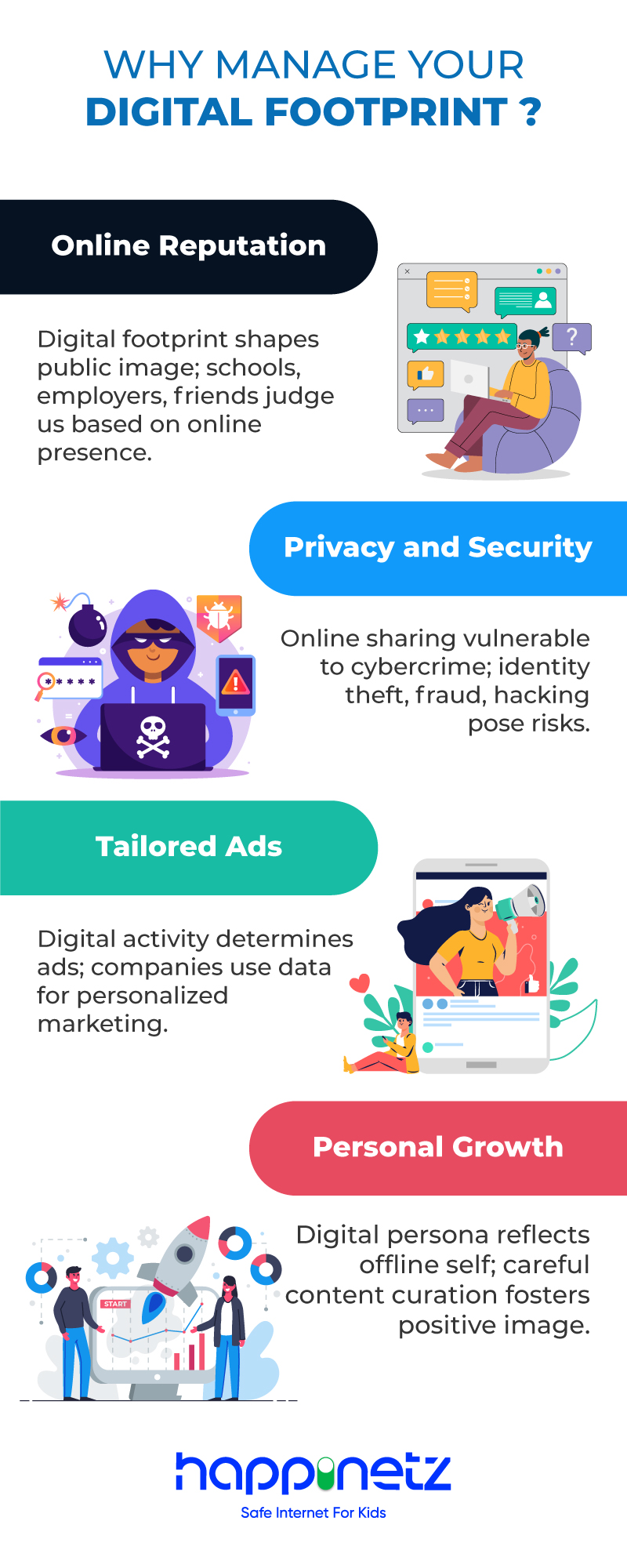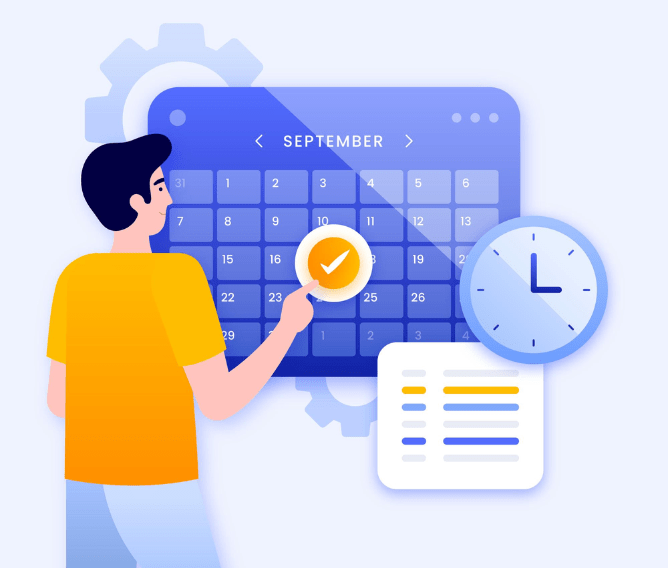Today our lives are intricately woven with the virtual realm, making our online presence as significant as our offline identity. Every action we take online, from social media posts to online transactions, to relationships and brands we build contributes to what is known as our "digital footprint."
First and foremost, what is a Digital Footprint?
A digital footprint is data that is left behind when we have been online as we navigate the internet. This data encompasses all our online activities, including social media interactions, browsing history, online purchases, email communications, and more. Just as our physical footprints leave an impression of where we've been, our digital footprints leave a trace of our virtual presence. This can include personal information, interests, patterns and preferences that paint a detailed picture of who we are in the digital world.
There are 4 kinds of digital footprints
Passive digital footprint: Websites create a background digital trail through data like cookies, browsing, and shopping history, collected with user consent. Varying levels of data collection occur, so checking cookie policies is advised.
Active digital footprint: Users knowingly post data online, forming their active footprint, often unaware of its reach or use. This includes social media posts, articles, and public reviews.
Positive digital footprint: It's your online reputation built on positive actions – photos of achievements, professional successes, or community involvement. It's a reflection of your best qualities and accomplishments.
Negative digital footprint: This is the opposite, where online content can harm your reputation. What's negative varies – a post may impact a job interview differently than a political campaign. Negative footprints are subjective.
Why manage your Digital Footprint
Now that we understand what digital footprint means, let's look into why we must learn to manage our footprints online.
Online reputation: Our digital footprint shapes our online reputation. The online space is largely public and our schools, colleges, employers, friends, partners will search for our online channels to form judgements about us. Managing what is visible online can significantly impact their perceptions.
Privacy and security: Cyber criminals can easily manipulate what is shared online and used for wrong purposes. Identity theft, fraud, hacking attempts etc are some risks we should be aware of.
Tailored ads: Companies use our digital footprints to generate targeted ads. What we search for online and our overall activity decides what type of ads we see!
Personal growth, introspection: The way we portray ourselves in the offline world creates an impression, our footprint in the digital world does too. By curating content thoughtfully, we can shape our online persona positively.
Managing and Protecting Your Digital Footprint
We’ve extensively talked about what a digital footprint is and why we should manage ours. Now, here are some simple online hygiene tips we can follow to protect our digital footprint and keep harm away.
Keep a tab on your online presence: Every now and then it is good practice to check our name on search engines to gauge what information is readily accessible. We can then eliminate or modify inappropriate content.
Check social media privacy settings: We should take time to customize the privacy configurations on our social media platforms to manage who can view our posts, images, and personal details.
Think twice before posting: Anything we post online has a permanent footprint and can be reached by others, so we must consider the lasting effects of what we post, how we speak online before we take the step.
Use strong passwords: It is important to also safeguard our online accounts with resilient, distinctive passwords and activate two-factor authentication. We should definitely avoid using the same passwords across multiple accounts and also saving our passwords in our phones/ pocket notebooks.
Limit personal information: It goes without saying that we should be cautious about sharing sensitive information like address, phone number, and financial details and share this information only with trusted sources.
Review app permissions periodically: Applications on our devices frequently ask access to our data. Periodically review and revoke permissions for apps that lack necessity for our personal information and for apps we no longer use. Always consider before giving access.
Safe online shopping: Online shopping can be exciting but when making online purchases, we should ensure we're on a secure website (look for "https" in the URL) and avoid saving payment information on websites and even apps.
Teaching Children About Digital Footprints
In the age of digital natives, it's important to educate children about the concept of digital footprints and online safety. Involvement of tech in children’s lives these days is inevitable so it only makes sense to start them on online safety practices.
Start early: Begin conversations about online safety and digital footprints as soon as children start using the internet.
Give them space for critical thinking: Teach children to question the credibility of websites and what they encounter online.
All about privacy settings: Walk them through adjusting privacy settings on their social media accounts and explain the importance of controlling who sees their posts and why certain aspects of their life must be kept private.
Guidance over surveillance: Introduce Happinetz early on: A parent or guardian cannot be present all the time to protect children online. Now we have many tools that work efficiently to keep harm at bay and enable children to have a smooth and safe online experience. Happinetz is one such device.

With an expert filtering system, it helps monitor 110 million+ websites and apps, blocks 18 million+ adult websites and 4 million+ unsecured websites. With this effectiveness, children are protected 24 hours a day. Its personalized screen time manager also helps parents and children work out a schedule for their online time so there is a healthy balance between online and offline activities.
Keep a tab on your online presence: Every now and then it is good practice to check our name on search engines to gauge what information is readily accessible. A quick and easy way to start is to use a free digital footprint checker to see what information is readily available. We can then eliminate or modify inappropriate content.
Talk about the permanency of the internet: Like we talked about how digital footprints are permanent, emphasize that anything posted online can impact their life in many ways.
Open communication: Make them feel comfortable to talk about their online experiences. Encourage them to ask questions and don’t judge them. Help them feel we can be their go-to person when in need.
Be role models: This is ultimate. Children learn by watching us. If we practice safe online behaviour, they are bound to emulate it.
In the digital age, our virtual selves are as real and influential as our physical presence. Our digital footprints shape how we're perceived, impact our security, and can influence various aspects of our lives. By understanding the importance of managing and protecting our digital footprints, we can harness the benefits of the online world while minimizing risks.
Equally important is teaching the younger generation about digital footprints, helping them navigate the virtual landscape safely and responsibly. Here’s when Happinetz comes in handy by becoming every parent and guardian’s safe internet ally.
As we tread the virtual path, let's ensure that our digital footprints reflect the best of who we are and what we stand for.
FAQs
What are digital footprints and why are they important?
A digital footprint is data that is left behind when we have been online as we navigate the internet. This data encompasses all our online activities, including social media interactions, browsing history, online purchases, email communications, and more. Once you post something, it will always be available on the internet. Understanding this can help you control what kind of information you're leaving behind.
Who can see my digital footprint?
Apart from hackers who wish to steal your identity, digital footprint can also be viewed by schools, employees, etc.
How can we reduce our digital footprint?
You can:
- Delete old accounts
- Check privacy settings on social media apps from time to time
- Keep location tracking off as much as possible
- Be careful what you post online
- Unsubscribe to mailing lists you no longer use




